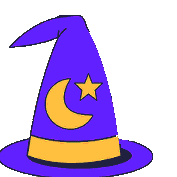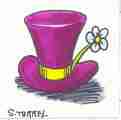 |
> Plus de cours & d'exercices d'anglais sur les mêmes thèmes : | Journaux | Vêtements [Autres thèmes] |
| > Tests similaires : - Acheter un vêtement dans un magasin : cours pour débutants en anglais - Vêtements et accessoires - Vêtements - Vocabulaire-Presse écrite - Choisir ses vêtements-Lexique - Vêtements /expressions - Presse écrite et jargon - Médias | |
| > Double-cliquez sur n'importe quel terme pour obtenir une traduction... |
Chapeaux et mode
Hugh Jackman has been named celebrity hat wearer of the year, but it wasn't long ago that hats were part of every self-respecting man's daily attire. What leads a man to wear a hat today?
Cast a glance over a photograph of a crowd or a street 100 or even 50 years ago. Take a look at the men assembled, and see if you can spot any of them who aren't wearing a hat.
Up until the 1960s, most men would have no more left the house without a hat than they would without trousers. Bankers and stockbrokers made the commute into the city wearing bowler hats, gentlemen took to the streets in straw boaters and manual workers passed through the factory gates wearing cloth caps.
The crowd shots of sporting events like the FA Cup in the 1920s show a sea of brims, peaks and ribbons.
The type of hat men wore may have been dependent upon their station, but regardless of class men did not venture out in public without a hat upon their head.
Rise of cars
Come the 1960s, however, and the rigid adherence to a code of headgear seemed to fade. Men started going about their business without a hat.
'It was the motorcar. Before cars became common they were a useful item of clothing to keep the weather off,' says Christine Smith, manager of the Hat Works hat museum in Manchester.
'And it was a status symbol - you had the bowler hat and the flat cap. It showed your place in the hierarchy.'
In the post-war period, with the most intense class stratification starting to fade, it was perhaps understandable that the badges of status like bowler and flat cap no longer carried the same weight.
Hats, up until then, had big business. At their peak, hat factories around Manchester produced felt hats in their thousands - the Denton Hat Company was making 100,000 a week in the 1930s to satisfy demand.
Tim Boucher, the proprietor of hat outfitter Bates in London's Jermyn Street, agrees that the hat watershed came in the 1960s.
'The younger generation had longer hair and that stopped them wanting to wear hats as much,' he says.
'People were also getting more affluent - they were buying cars, and weren't needing to wear hats.'
Peter Howarth, the editor of the Sunday Telegraph's men's fashion magazine, says the decline of formality in menswear has led to the disappearance of the hat.
'There is this myth that John F Kennedy went to his inauguration in 1960 without a hat. Actually he did, but he didn't wear it during the ceremony.
'Generally if you look at the history of menswear, in the last 100 years it's been a gradual progression from formal to casual wear. The jacket has gone from a military frock coat to the jacket of a lounge suit, the shirt has gone from something with stiff studded collars to a fold down collar, and the formal, handmade shoe has been replaced, in some cases, with trainers.
'Nowadays the expectation we have is that the things we wear will be comfortable. And the formal hat fell victim to that general trend.'
While the British stopped wearing hats as part of their typical work garb, they are now linked more with pastimes. Men wear Panama hats while watching the cricket, a straw boater while enjoying the boat race, or a trilby when at the races.
Mr Boucher believes we shouldn't be too quick to pronounce the death of the hat.
'The last three or four years we have seen our sales rise by about 30%,' he says. 'A lot of customers are tending to go in for things like the narrow-band trilby, or the Gatsby cap, which is still very popular.'
It is now not uncommon to see men on nights out wearing hats, rather than caps, perhaps inspired by celebrity hat wearers like Pete Doherty.
Mr Boucher says a lot of younger, casually-dressed customers are seeking ways to show their individuality.
Hat-wearing for men is often linked to formal behaviour - the tipping of a hat when a lady walks past, the removal of a hat on entry to church, the holding of a hat to the heart during the national anthem, and the throwing aloft at the end of hostilities.
Dave Swann, 40, a graphic designer from London, started regularly wearing a hat about a year ago.
'I've pretty much always worn some sort of head gear off and on but I suddenly became interested in Baker Boys [a kind of Gatsby cap] about a year ago, since then they've been all I've worn.'
Mr Swann says it is partly about personal style, but also 'there's an element of a psychological safety blanket as well, the more you cover your head the more of a wall you build up from the rest of society'.
Ollie Thomas, 25, a publicist, often wears a hat to work. He says they can be 'anything from beanies to bobbles to flat caps to Cubans'.
'When I am in the office I prefer to wear a more traditional flat cap as opposed to weekend when I would wear a beanie.'
He says he also likes the link with tradition, 'especially with my tweed flat caps'.
'They can also be seen as stylish as well, so you can kill two birds with one stone.'
Mr Howarth says it's younger men - aged between 14 and 25 - who are keeping hat wearing alive.
'They are wearing a lot of hats - beanies and baseball caps and flat caps. And they're doing it a lot more than they were 10 years ago. To them it's a fashion thing.
'My teenage son wears a hat all the time - it'll be interesting to see if he still is in 10 years time.'
BBC News Magazine



Exercice d'anglais "Chapeaux et mode" créé par lucile83 avec le générateur de tests - créez votre propre test ! [Plus de cours et d'exercices de lucile83]
Voir les statistiques de réussite de ce test d'anglais
Fin de l'exercice d'anglais "Chapeaux et mode"
Un exercice d'anglais gratuit pour apprendre l'anglais.
Tous les exercices | Plus de cours et d'exercices d'anglais sur les mêmes thèmes : | Journaux | Vêtements
